1. Stale Professional Experiences
Do you still have a blurb from your internship eight years ago? Or maybe a portfolio item that was totally impressive when you were just starting out?
Consider giving them the axe today.
Details about your ancient professional history draw attention away from your most recent and relevant experiences. So, allow your past two roles to sell you and boil anything seven to 10 years in the past down to the essentials (which in some cases might include just your job title and company name).
2. Unendorsed Skills
Your skills section is a keyword oasis, which can make loading it with the maximum allowed 50 skills pretty tempting. But it’ll backfire, as in many cases, handfuls of them go unendorsed altogether. (Translation: You have a list of talents that no one is willing to say you’re any good at.)
These “dead” skills become clutter. They raise more questions than they do interest. Worse, how much keyword power could they really have if other users aren’t interacting with them?
Prune your skills section and attract new endorsements on a regular basis.
3. Lackluster Accomplishments
Many of your once-independent profile sections such as Projects, Honors & Awards, Patents and others are now gathered in a new “Accomplishments” section. It’s pretty genius, because organizing the content this way removes a ton of unnecessary bulk.
There’s a trade-off though: These accomplishments now directly compete with each other for attention.
Look carefully at what you’ve listed here and identify which items you’d want someone to be sure to see, and those you’d be okay with them forgetting. I always recommend removing your language skills if you’re not fluent (because “High School Spanish” isn’t impressing anyone). While you’re at it, cut test scores and courses from your ancient academic history.
Other possible distractions: Certifications that have expired, projects that fizzled and publications with URLs that are no longer valid (check these twice!). Awards from early in your career that you know aren’t that impressive can be make excess noise too. Removing these items will allow your more impressive—and relevant—accomplishments to stand out.
The idea is to only highlight those items that build the personal brand you want reflected right now.
4. Old Recommendations
Granted, anytime someone says something really lovely about you, it’s a nice thing. So, I get why you’d cringe at the thought of cutting nice paragraphs all about you. But hear me out: Outdated recommendations can undersell you, or sell skills you’re not interested in using anymore—which means, they can undermine who you are today.
For example, let’s say you spent the early half of your career in marketing, but now you’re solely interested in backend web development. A profile full of songs of praise for your marketing-related talents could distort the “I’m an ace with servers and databases!” impression you’re looking to make, and instead make you come off like someone who fell into tech yesterday.
Obviously, if you’ve won recognition from a particularly notable figure, or if someone says you’re the best professional they’ve ever worked with, it may be worth retaining because of the awesome level of social proof it holds. But in most cases, you’ll want to replace or hide old recommendations to give emphasis to those that pair well with your current direction.
LinkedIn is a place to shape a precise, meaningful, persuasive story about your talents—not a career catchall. Cutting distracting content might feel odd at first, but it’s vital to refining the message you deliver. So really try to make the most of its new streamlined design to wow everyone who visits your profile.
“4 Things You Really Need To Delete From Your LinkedIn Profile Today” was originally published on The Muse.
Erica Breuer is the founder of Cake Resumes and a frequent contributor to The Muse.




